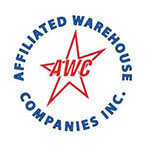
The Essential Warehouse Food Storage Requirements
Before you open your warehouse food storage, there are requirements you must meet. This ensures food safety for your customers. Here’s your guide.
Are you opening a warehouse food storage facility?
Do you already own one, but need refreshing on the regulations?
Are you still unsure of the specific guidelines that place food storage into the categories of dry, cold/frozen, or chilled/refrigerated?
This article should find answers to all of those questions.
Food storage is not an area to slack in; it should be consistent, particular to each style of food, and upheld to the best standards possible. This ensures quality food for customers and consumers. Not doing so could be detrimental to a company, as well as the lives of those tainted by improper storage.
There are some essential, no-wiggle-room rules that come along with owning and maintaining a food storage warehouse. Don’t get bogged down in confusion: read this guide and feel confident in your ability to provide excellent service.
Essential Rules for Proper Food Storage
The good news is that owners and employees can perform self-checks on the facility at any time, ensuring that everything is always up to the standards required for owning this type of warehouse. One day before official opening, and periodically after initial checks, someone is sure to come by for proper inspections.
Your company will need to be armed with knowledge and answers. There are many different areas to review, but here’s a shortened list for a quick idea of what will be examined:
- Employees: properly trained in food storage or not?
- Quality of the grounds, and the facility itself
- Building condition (leaks, dirt, temperature, bugs)
- Equipment condition
- Proper rotation of food (such as FIFO: first in, first out)
- Pest control: how is it done?
And that’s just to name a few.
This should be a good beginning guideline of what to expect when it comes time for a professional inspection. Provide not just the boss, but the employees as well, with the information needed to give informed answers about their positions and the proper storage rules.
Food storage is broken down into three categories, specified below.
Cold or Frozen Storage
Food that is improperly stored at room temperatures can harvest bacteria growth with an ability to double every 20 minutes! This greatly increases the odds of consumers getting foodborne illnesses, a major concern for warehouse owners.
Thermometers will be a warehouse’s best friend, and should be utilized frequently to make sure there are no malfunctions. A daily, and sometimes hourly, check of the thermometers should be measured.
A freezer should maintain a temperature of 0 degrees F (-18 degrees C) or less at all times. This stops, and/or greatly reduces, the rate at which bacteria will grow on the surface of food. This temperature should not fluctuate, and if it rises, food will need to be discarded and replaced. A freezer can prevent bacteria growth, but not reverse already present growth.
Don’t risk it. Bacterial infections such as E. coli affect 20-40,000 people per year. If food has been out too long, or freezer malfunctions for any reason, take precautions and remember: better safe than sorry.
Cold and frozen foods include the likes of ice cream; frozen pizzas; any perishables. Almost anything but canned goods, eggs with shells, and similar items can be frozen to prolong shelf life, with quality only being compromised after a long period of time.
Dry Storage
Any type of canned goods, dehydrated items, grains, pasta, rice, jerky, and similar items are considered dry storage foods. This is perhaps one of the easier-to-maintain areas of food storage, but there are still some factors to consider.
The Temperature of Storage Area
Temperature directly correlates with shelf life. The hotter the temperatures, the shorter the life of canned goods and other products. Check dates frequently; dry items will expire faster.
Moisture Content
The amount of moisture in whatever is being stored will affect its expiration. The dryer, the better it will last. For example, any type of juicy fruit might be considered dry storage, but will go bad much quicker than foods like rice and beans.
Container Atmosphere
This concerns any foods items in containers such as sealed bags. Oxygen, like temperature, affects the life of food (hence why dehydrating the items will prolong the life).
Anything that has oxygen in its container, or is not completely vacuum-sealed, is at risk of perishing quicker.
Storage Container
This also concerns the container, but more in a quality manner. An air-tight seal (like on a can) is much preferred to bags, plastic holders, and the like, for prolonged shelf life.
Chilled or Refrigerated Storage
Refrigerated food items are meant to be kept at a temperature of 40 degrees F (4.44 degrees C) or less at all times. The same way food deteriorates in a warmer freezer, it will affect the quality of chilled and refrigerated items.
The longer chilled items are left out, and the warmer they get, the more bacteria growth is occurring. Foodborne illnesses like Salmonella affect millions of people a year; to prevent this happening as a result of your warehouse’s food storage, don’t let cold food get mushy or warm ever.
Some perishable, refrigerated foods include some of the following: fresh meat; fruits; vegetables; already chilled foods; and anything freshly cooked that will be used later.
The lower the temperatures, the lower the rate of harmful microorganisms taking over. If this article has taught anything, it’s that hot=bad and cold=good.
The majority of chilled items last a couple weeks at most, with exceptions being items like butter, certain cheeses, and eggs. Keep a constant eye on refrigerated food rotation.
Quality is Key
Handling food is a delicate process that deserves careful attention. Nobody wants to eat anything that came from a contaminated, unkept place; that’s a universal feeling. The world deserves quality food and nourishment.
We hope that by the time you’ve reached the end of this article, you’ve grown a confidence in your ability to open or help open a food storage warehouse that obeys the codes that come along it. With diligence, continuous upkeep, and care, a facility can run smoothly and safely for generations. Just know, it is a long and complex process to run your own warehouse properly. You should still seriously consider outsourcing your warehousing to a professional operation like Dakota Warehouse.
Dakota Warehouse can store a wide variety of items, not just food storage. We store everything from bricks from Spain, car wash products, frozen buffalo meats to baby wraps. If you decide to outsource your warehousing instead of building your own, contact us and we can help meet your needs quickly.



